Direct mail can deliver an impressive ROI. And according to most reports, offline giving—i.e., anything not on the web—still accounts for approximately 90% of all charitable giving.
This article is courtesy of Billy Sharma, a direct mail designer and copywriter with many decades of experience in the non-profit sector. You can subscribe to his monthly newsletter by emailing billy@designersinc.ca. To download back issues, go to ‘Freebies’ on his website designersinc.ca.
________________________________________________________________
Nearly 80% of customers use at least one ‘traditional’ channel to find out about new products and services, the same number as those who use at least one digital channel.
- Mail, due to its very physicality, offers the chance to create messages that stand out, ensure recall and generate a positive experience for recipients; 70% of people say mail makes them feel more valued compared to 30% for email.
- 45% of recipients have made an enquiry or requested more information by phone; 36% have bought or ordered something; 32% have made an enquiry or requested more information; 29% have visited a store; and 41% have renewed a service or subscription.
- Adding mail to the mix can boost ROI by 12%.
- Neuroscience research shows that when primed by mail, people spent 30% longer looking at social ads — mail sent out before the social media advertising element of a campaign boosts dwell-time. (Source: Royal Mail)
Besides, most of your donors are older people. In fact:
- Older people still prefer receiving direct mail over other marketing methods. According to DMA: The response rate for direct mail is 3.7% compared to 2% for mobile, 1% for email, 1% for social media and 0.2% for internet display.
- There are more Baby Boomers in Canada today than ever before and the percentage will keep on growing for quite some time. The 2016 census from Statistics Canada shows that the proportion of those aged 65 and older climbed to 16.9 per cent of Canada’s population.
- Baby Boomers are the most generous donors. The average amounts donated increase with age, where those in the 65+ category give on average $643 annually.
For the next 10 to 20 years, direct mail will continue to become an increasingly important fundraising tool for non-profits.
1. Direct mail allows you to tell real stories.
Stories: long, short or detailed. Because they are packed with emotional and thought-provoking content and not constrained by word counts, they can tell donors to see how their charity is helping change the world, and what their gift can accomplish.
The growing importance of emotion. Marketers are always looking to engage audiences that inspires action. A powerful way to ensure that is to leverage emotion. If something feels personally relevant and meaningful, our brains are more likely to store it into memory.
Royal Mail Market Reach conducted a series of studies using neuroscience which addresses emotional engagement in consumers.
They found that a huge driver of these consumer responses is the power of touch. In an increasingly digital world, touch is an asset for marketers. Marketing channels like mail help brands to feel human and real. Over a ten-year period research showed the percentage of people stated that mail “makes them feel valued and gives them a better impression of the company” had increased to 70%.
Example: Movember is a charity best known for men sporting weird and wonderful moustaches during the month of November to promote annual awareness and fundraising for men’s health.
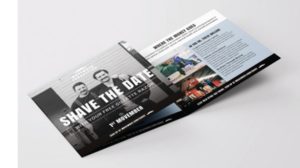
The campaign delivered 1,500 new donors and 300 existing donors signed-up again.
2. Direct mail allows you to include cool stuff.
We process visual items 60,000 times faster than text.
Example: Alzheimer’s Eraser USB stick. Alzheimer’s New Zealand mailed this eraser that was hollowed out and fitted with USB memory sticks.
The message displayed on the top was: ALZHEIMER’S ERASES OUR MEMORIES. SAVE THEM. On the reverse side was the Alzheimer’s New Zealand logo and website, the place you can turn for more information and support: alzheimers.co.nz.
The success of the outcome showed up in the market. Alzheimer’s New Zealand distributed these eraser/USBs among the public, sent them to various local organisations and distributed them to local politicians, with a letter, in an attempt to raise awareness of the charity.
They received positive feedback and they’ll hopefully continue to leave people with some sort of understanding of what people with Alzheimer’s go through everyday. They have close at hand where they could turn for more information and support.
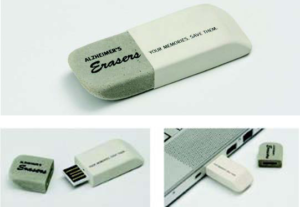
Advertising Agency: Colenso BBDO, Auckland, NZ
Executive Creative Director: NickWorthington
Art Director / Copywriter / Designer: Lisa Fedyszyn
Copywriter / Art Director: Jonathan McMahon
Account Manager: Stefanie Robertson
Planner: Hayley Pardoe
Agency Producer: Phil Newman
Designer: Phila Lagaluga
3. Direct mail allows you to personalize your message to each individual.
The personal aspect is one of the reasons why direct mail has a 94% engagement rate.
- It also generates impressive sales results.
- 31% of direct mail can drive commercial actions like going online and buying.
Example: Integra’s Bookmark Mailing.
The result: Integra collected $10,600 and got a 45% response. How valuable was that?
Would the donors discard the bookmark with their own name? Not in a million years. As Dale Carnegie said: “There’s no sweeter music than the sound of your own name.
Credits
Client: Integra Foundation
Director of Development: Ellen Nichols, B.Sc., D.C.S.
Art Director / Copywriter / Designer: Billy Sharma
4. Direct mail allows you to talk to thousands of people at the same time.
Example: Vent Inspection Flyer
In Poland, 100 people die from carbon monoxide poisoning every year. The National Fire Service of Poland masterminded a partnership with a major Polish retailer Pepco and hired Grey Group Poland to create a direct mail leaflet.
This simple leaflet when held over a properly working vent should stick. If it doesn’t stick, that would mean that the vent could be malfunctioning—a potential cause of carbon monoxide poisoning—and highlights the need to get it checked out.
The campaign was so successful that there are plans to roll it out to other countries.
Watch the video. Here is the link: https://youtu.be/yIbjFPIX58s
Credits:
Advertising Agency: Grey Group Poland, Warsaw
Creative Director / Copywriter: Jakub Korolczuk
Art Director: Dominika Hałas
Copywriter: Marek Górski
5. Direct mail is all about call to action and response. We even get letters back in return.
Yep, that’s right. It’s not uncommon for donors to write letters back to the organization, telling them their own story or thanking them for the delightful package.
Example: Special Olympics Ontario
Credits:
Client: Special Olympics Ontario
Director of Development:Lynn Miller
Art Director / Copywriter / Designer: Billy Sharma
6. Direct mail is great when it comes to Return on Investment (ROI).
If your organization has been doing direct mail for a few years, you have the data and results to confidently build your yearly plan around a revenue goal. You know how many people you need to mail to (and how often) and how many you need to acquire to hit your revenue target each year.
Example: The Heart Sewing Kit
More than half of the Romanian children who need heart surgeries cannot be operated on in state hospitals. They end up on a long waiting list. The Heart of Children took up the mission to save babies’ lives with the help of foreign surgeons who operate free of charge. But these surgeries still require huge expenses. They launched a funding campaign that helps people see and grasp their good deed: donors are transformed into artists and surgeons by sewing their own heart-shaped brooch. Buy a brooch, sew a heart, save a life!
Video link: https://youtu.be/fVcdhtJcs3w
Credits:
Advertising Agency: Mercury 360 Communications, Bucharest, Romania
Cosanzeana Creative Fairy: Laura Leonte
Creative Director: Liviu Turcanu
Copywriter: Alexandra Jitarel
Art Director: Andreea Roșcan
Client Service Director: Mihaela Bourceanu
Senior Account Manager: Loredana Hatingher
Account Director: Diana Carla Benea
Junior Activation Manager: Cristina Iacobu
Activation Area Coordinator: Alex Moldoveanu
Production Manager: Andreea Mangu
DTP Manager: Liviu Tanase
Digital Director: Adrian Pavelescu
Copywriter: Sonia Ardelean
Art Director: Andrei Busuioc
7. Direct mail lets your donors know when you have an urgency or an emergency.
If you had CPR training, you know that the first thing to do is pick a bystander, point at him and say: “You, —call 911.” Similarly, direct mail allows you to broadcast an emergency effectively.
Example: BC Centre for Disease Control Measles DM
Video link: https://youtu.be/qXTCI-FSIEI
Credits:
Advertising Agency: Rethink, Vancouver, Canada
Creative Directors: Ian Grais, Chris Staples
Art Director: Leia Rogers
Copywriter: Morgan Tierney
Content Strategist: Leah Gregg
Print Producer: Sue Wilkinson, Cary Emley
Studio Artist: Jonathon Cesar, Tom Pettapiece, Jan Day
Printer: Generation Printing
Account Services: Chelsea Stoelting
8. Direct response is all about measurement.
Years ago, John Wanamaker famously remarked, “Half the money I spend on advertising is wasted, the trouble is I don’t know which half.“
If John Wanamaker had used direct response, the measurement tools and the discipline we have at our disposal today, he could have figured out exactly ”which half was being wasted.” Direct response is all about being able to track a specific response and determine how to improve that response. You never want to get stuck wondering what’s working and what’s not. Think of direct response as a race, where there is always a clear winner, and advertising as an ice skating performance, where you are at the subjective whim of the judge(s) as to how well you performed.
Example: The Foundation for Queen Silvia Children’s Hospital: A Childish Letter
Video Link: https://youtu.be/WeOm0uc-1eg
Credits:
Advertising Agency: Milk Reklambyrå, Sweden
Copywriters: Rasmus Andersson, Anders Holmström, Torkel Norling
Art Directors: Peter Eriksson, Gunnar Skarland
Digital creative: Axel Tagg
9. It appears in real, tactile, physical form and the items inside can help you tell a story.
- This in turn can leave a lasting impression. Mail is memorable, helps build customer relationships and brand equity and drives actions. In an age of clutter, mail is memorable: long-term memory encoding was 49% stronger for content delivered by mail than email.
- Long-term memory encoding correlates strongly with decision-making and purchase intent.
- Mail is a primer: people who have received mail from a brand spend 31% longer looking at that brand’s social media content. (Source: Royal Mail)
Example: This UNHCR package included a piece of cardboard that told a story as to why refugees deserved a better shelter than pieces of cardboard.
The Result: It raised $61,500 from 726 new donors and became the control package here in Canada and the US.
Credits:
Client: UNHCR
Agency: HJC New Media
Art Director / Copywriter / Designer: Billy Sharma
10. DM appeals are forever (just like a diamond).
People hold onto their mail. According to Royal Mail, direct mail packages linger in the home for an average of 6.8 days and 27% stay in the home for over four weeks. It is read and re-visited four times on average.
Business mail, defined as bills, statements, renewal reminders and so on, does even better: 99% is engaged with and it has an average shelf-life of 8.9 days (with 39% hanging around for more than four weeks). The average number of actions it prompts is just under five.
One organization that I worked with received a donation for an appeal two years after it was mailed. How cool is that!
___________________________________________________________________________
Once again thanks to Billy Sharma for this article. You can subscribe to his monthly newsletter by emailing billy@designersinc.ca. To download back issues, go to ‘Freebies’ on his website designersinc.ca.
If you have any questions or comments, feel free to leave them below.


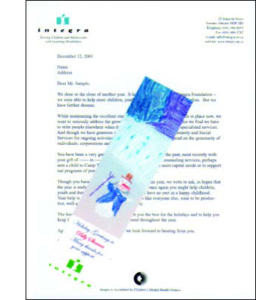 The personal aspect is one of the reasons why direct mail has a 94% engagement rate.
The personal aspect is one of the reasons why direct mail has a 94% engagement rate.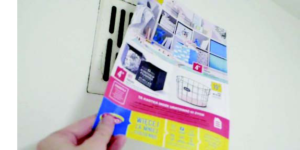
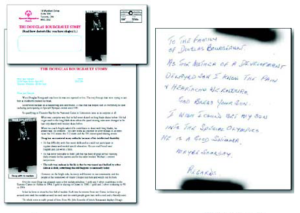
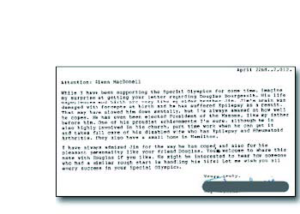
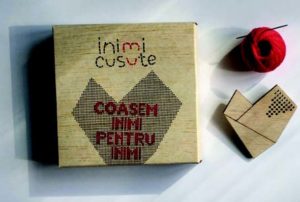



0 Comments